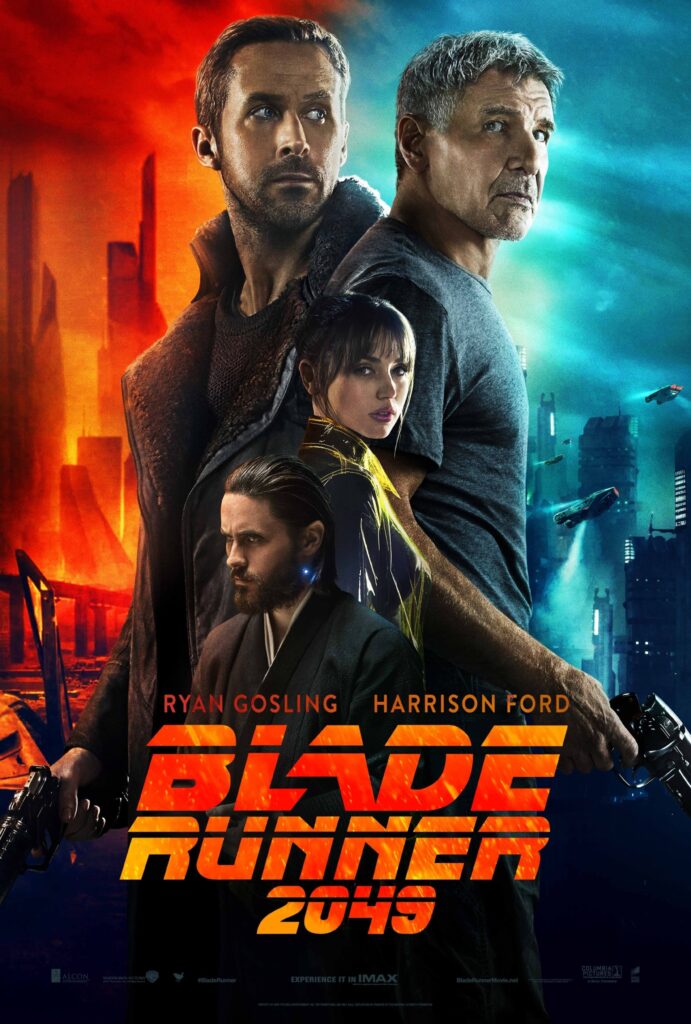Emerging in the early 1980s, the cyberpunk subculture is rooted in a dystopian, high-tech, and low-life ethos. It combines advanced technological innovations with societal decay and often features anti-heroes fighting against oppressive systems. The subculture is heavily influenced by science fiction literature, films, and media that explore themes of cybernetics, artificial intelligence, and corporate control. The term “Cyberpunk” itself was first introduced by Bruce Bethke in his 1980 short story titled “Cyberpunk,” which was published in 1983. The word combines “Cyber,” referring to the burgeoning field of cybernetics—the study of communication and control systems in living organisms and machines proposed by Norbert Wiener—and “Punk,” which refers to the rebellious attitude, anti-authoritarianism, anti-corporatism, and do-it-yourself ethos that characterized the punk subculture. Therefore, Cyberpunk inherited the rebellious nature of both cybernetics and punk culture.
As the golden age of science fiction began to fade, Science Fiction writers were tired of the genre’s uncritical adoration of unattainable technology. The aftermath of World War II brought a sharp realization about the world dominated by capitalist interests. To confront the cold, cruel, and competitive nature of capitalism, heightened by the technological rivalry between the United States and the Soviet Union during the Cold War, some visionary precursors started to challenge the optimistic nature of high-tech futures by proposing three questions:
In response to these inquiries, the genre of Science Fiction shifted towards a new direction. In the mid-1960s, the New Wave movement was on the rise. Michael John Moorcock, one of the key figures in the movement, urged society to move beyond conventional “hard science fiction” that focused on technological developments. Instead, the New Wave activists aimed to infuse science fiction with a more personal vision, rich literary styles, and a deeper engagement with contemporary culture, technology, and social issues. This innovative approach was crucial in establishing the foundations for the Cyberpunk genre, characterized by its critical examination of technology’s impact on society.
In 1984, William Ford Gibson published “Neuromancer,” one of the most influential pieces of science fiction in establishing cyberpunk as a genre and igniting vibrant debates around the concept of Cyberpunk. Gibson’s narrative diverges from traditional science fiction, envisioning a near future of relentless societal turmoil –– a reflection of the rapid technological and cultural transformations in the 1960s and 70s, a period marked by the climax of the Civil Rights Movement and the continued tensions of the Cold War. Since then, cyberpunk writers began to create dystopia novels that combined the impacts of “high tech,” on “low life” characters—-the marginalized, the outcasts, and the rebels of society. This combination of extreme bipolar forces us to reflect on the consequences of our relationship with technology and its broader societal implications on human morality.



At the end of the 1990s, the involvement of capital began to weaken the distinctive stylization of cyberpunk and its rebellious nature. This was due to two primary factors:
As digital media has evolved, providing constant access to entertainment, communication, and community, many subcultural spaces have predominantly shifted online, becoming more accessible than ever. Individuals can now participate in subcultures remotely, making physical presence optional. This shift reduces costs and allows people to connect with one or multiple subcultural communities using just their phones. However, this prevalence has led to the commodification of these spaces. The Cyberpunk subculture, in particular, has been greatly impacted due to its close connection with digital media and high-tech development.
The capitalist consumer market has dominated the process of absorbing subcultural products with symbolic meaning. On one hand, the distinctive symbols of the subculture are readily adopted for mass-produced goods. On the other hand, cyberpunk is reduced to a set of commercial symbols that have been manipulated by capitalists during the process of commercial production. As a result, the connection between symbol and meaning is reshaped and redefined by capitalist interests rather than by the individual users according to their personal values. Consequently, cyberpunk’s unique and resistant symbolic significance has gradually diminished, and it has been transformed into a mere cultural commodity offering nothing more than entertainment.
The prevalence of Cyberpunk 2077 is a prime example of globalization and commodification in the digital age. As a highly anticipated video game, it has reached a global audience, transcending cultural and geographic boundaries. The game’s widespread appeal can be attributed to its marketing strategies, which leveraged international platforms and celebrity endorsements, notably Keanu Reeves. Additionally, Cyberpunk 2077 exemplifies the commodification of the cyberpunk subculture, packaging its distinctive aesthetic and themes into a product for mass consumption. This commercialization has allowed the cyberpunk genre to gain mainstream popularity, making its themes of high-tech dystopia and societal decay accessible to a broader audience. However, this process also raises questions about the authenticity and integrity of subcultures when they are adapted for global markets and profit-driven motives.

Cyberpunk enthusiasts often attend conventions such as Cyberpunk Con and Comic-Con, where they can participate in panels, meet authors and creators, and engage with other fans. These events are often a hub for discussing cyberpunk media, technology, and culture.

Dressing up as characters from cyberpunk media is a popular activity. Cosplayers create elaborate costumes that often incorporate DIY electronics, LED lights, and futuristic accessories to reflect the high-tech aesthetic of the subculture.

Many cyberpunk fans are active in online forums, social media groups, and virtual spaces where they discuss themes, share art, and collaborate on projects. Websites like Reddit and Discord host vibrant cyberpunk communities.
Originally a subculture, the pioneers and audience sought to debunk the falsely optimistic portrayal of high technology. It emphasized a rebellious ethos that encouraged critical reflection on the impact of rapid technological progress on human ethics and societal foundations. However, as cyberpunk became mainstream within the commercial markets and the globalized world, it transformed to a product that caters to consumer society, merely serving as entertainment. Over time, the cyberpunk audience expanded to include a diverse group intrigued by the interplay of technology and society, leading to a demographic that spans various cultures and engages with the genre in multiple forms. Despite its widespread popularity, the foundational cautions about the consequences of high technological advancements have been overshadowed.
In a highly developed capitalist society, the alienation of science and technology has caused workers to lose their freedom of choice and ability of critical thinking. They become slaves to consumer products and become one-dimensional men, diminishing their complexity as individuals. This leads people into a new ignorance.
Herbert Marcuse
Reflecting on cyberpunk’s evolution is a constant reminder of the subculture’s original intent: to challenge the dominant culture and foster a wealth of differing viewpoints through its opposition and defiant nature.
Andrews, C. (2021). Beyond Cyberpunk Culture. Science – Fiction Studies, 48(2), 354–360. https://doi.org/10.1353/sfs.2021.0032
Lu, Q., & Ren, Q. (2018). Review on marcusers theory of the alienation of Science and technology and its contemporary values. Proceedings of the 2018 2nd International Conference on Management, Education and Social Science (ICMESS 2018). https://doi.org/10.2991/icmess-18.2018.401
Murphy, G., & Schmeink, L. (Eds.). (2017). Cyberpunk and Visual Culture (1st ed.). Routledge. https://doi-org.grinnell.idm.oclc.org/10.4324/9781315161372
Myerson, S. (2020). Global cyberpunk: Reclaiming utopia in Japanese cyberpunk film. Science Fiction Film and Television, 13(3), 363–386. https://doi.org/10.3828/sfftv.2020.21
Player, M. (2020). The Routledge Companion to Cyberpunk Culture ed. by Anna McFarlane, Graham J. Murphy, and Lars Schmeink (review). Configurations, 28(3), 395–397. https://doi.org/10.1353/con.2020.0022
Zhang, W. (2022). The Transformation of Cyberpunk: From Resistant Subculture to Popular Style. In Proceedings of the 2022 2nd International Conference on Modern Educational Technology and Social Sciences (ICMETSS 2022). Atlantis Press SARL. https://doi.org/10.2991/978-2-494069-45-9_62
YouTube. (2019, June 9). Cyberpunk 2077 – official cinematic trailer | E3 2019. YouTube. https://www.youtube.com/watch?v=LembwKDo1Dk
YouTube. (2023b, July 14). Neuromancer: The Origin of Cyberpunk | a horrifying dystopia. YouTube. https://www.youtube.com/watch?v=HGW_7HTXuQo
Cyberpunk enthusiasts often attend conventions such as Cyberpunk Con and Comic-Con, where they can participate in panels, meet authors and creators, and engage with other fans. These events are often a hub for discussing cyberpunk media, technology, and culture.